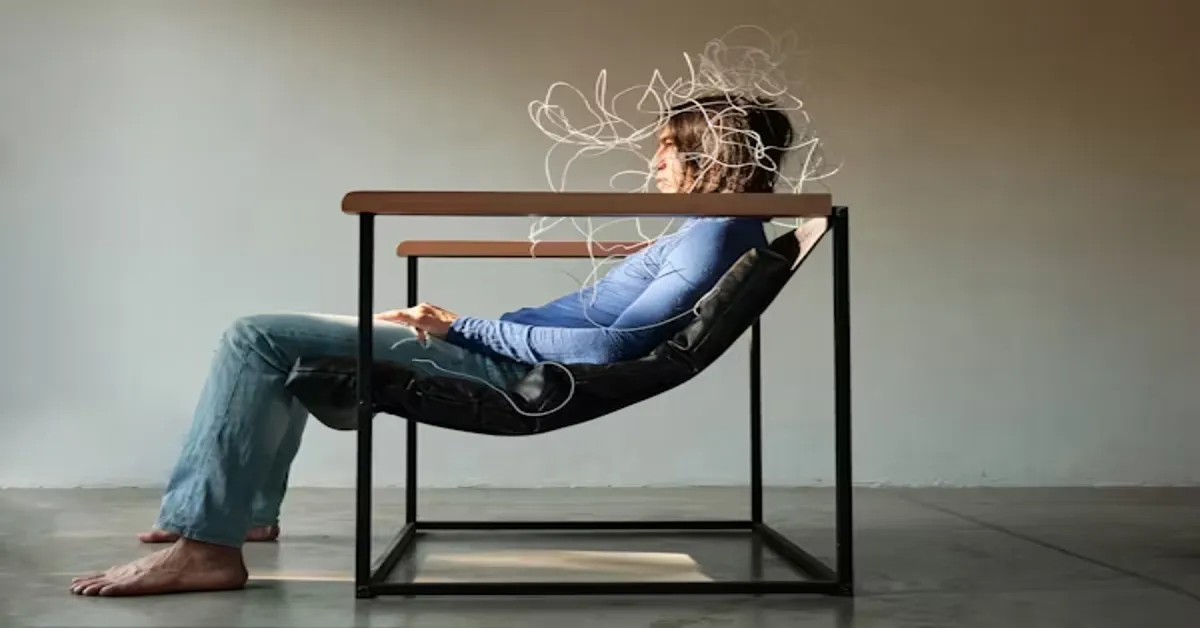Sitting is something most people do without thinking — we simply drop into a chair, couch, bench, or any other surface designed to hold us. But in the modern era, where we spend long hours at desks, in vehicles, or in front of screens, the idea of “new sitting” has emerged as a fresh approach to how we position our bodies, arrange our surroundings, and adapt our habits. Unlike traditional sitting that often neglects posture, circulation, and movement, new sitting focuses on comfort, ergonomics, and long-term well-being.
This article will explore new sitting from every angle — what it means, why it matters, how it works, and how you can integrate it into daily life. We will also look at its health implications, design innovations, and role in the workplace and home. By the end, you’ll understand not only what new sitting is, but how to use it to improve your lifestyle.
1. Understanding the Concept of New Sitting
New sitting is not just a marketing term; it is a philosophy of body positioning and posture that takes into account:
- Anatomy and alignment: How your spine, pelvis, and shoulders align to reduce strain.
- Movement integration: Avoiding static positions by encouraging small shifts or posture changes.
- Support distribution: Using furniture and cushions that distribute body weight evenly.
- Environment adaptation: Arranging your work, leisure, and dining spaces for optimal sitting comfort.
In essence, new sitting is about breaking away from the “sit still for hours” culture and replacing it with smarter, healthier practices.
2. The Historical Shift in Sitting Habits
To understand new sitting, it helps to know how our sitting habits evolved. Centuries ago, most cultures relied on floor-based sitting — cross-legged, kneeling, squatting — which kept hips and knees mobile. Chairs were luxury items for the elite. With industrialization, the workplace demanded prolonged seated tasks, leading to the modern chair-and-desk setup.
The problem? Human anatomy was never designed for prolonged static sitting. Over time, this has contributed to back pain, poor circulation, and other health concerns. Sitting responds to this by rethinking furniture design, incorporating ergonomic science, and encouraging mobility.
3. The Principles of New Sitting
The principles behind sitting revolve around three pillars:
A. Postural Neutrality
The spine has a natural “S” curve. New sitting aims to maintain this shape, preventing slouching or over-arching. Neutral posture distributes load evenly and prevents muscle fatigue.
B. Movement Encouragement
Even the best posture can become harmful if held too long. New sitting integrates micro-movements, such as seat tilting, subtle stretching, or alternating between sitting and standing.
C. Customized Comfort
No single posture works for every body type. Adjustable furniture, personalized cushions, and modular seating allow each individual to tailor their seating to their own needs.
4. The Role of Ergonomics in New Sitting
Ergonomics is the science of designing for human comfort and efficiency. In the context of sitting, ergonomics influences:
- Seat height and depth: Preventing excessive hip and knee strain.
- Backrest angle: Supporting lumbar curvature.
- Armrest positioning: Keeping shoulders relaxed.
- Material choice: Breathable fabrics to reduce heat buildup.
- Dynamic adjustability: Chairs or stools that adapt to different activities.
An ergonomic approach ensures sitting does not hinder blood circulation, compress nerves, or overstress joints.
5. Health Benefits of New Sitting
When done correctly, sitting can deliver several health benefits:
- Reduced back and neck pain: Proper spinal alignment prevents chronic discomfort.
- Improved blood flow: Less pressure on veins in the legs reduces swelling and clot risk.
- Better breathing: Upright posture allows the diaphragm to work efficiently.
- Enhanced concentration: Comfort and reduced pain allow for longer focus periods.
- Increased energy: Avoiding slouching and static positions reduces fatigue.
6. Common Problems With Traditional Sitting
Traditional sitting often leads to:
- Slouched shoulders and rounded back due to poor lumbar support.
- Hip tightness from excessive flexion without movement.
- Circulatory issues such as varicose veins or deep vein thrombosis.
- Compressed organs affecting digestion and breathing.
These issues accumulate over years, which is why shifting to sitting practices is so important.
7. Practical New Sitting Techniques
Here are several methods to implement sitting in daily life:
- The 90-90 Rule: Keep knees and hips at about 90 degrees.
- Feet flat: Ground contact helps balance the pelvis.
- Neutral spine: Avoid leaning forward excessively.
- Periodic standing: Every 30–45 minutes, stand up or stretch.
- Dynamic seating: Use wobble stools or balance balls occasionally.
8. Innovations in Furniture Design for New Sitting
Furniture makers have embraced the concept of sitting, creating:
- Ergonomic chairs with adjustable lumbar support.
- Sit-stand desks to alternate between positions.
- Saddle chairs promoting open hip angles.
- Kneeling chairs encouraging upright posture.
- Active stools that tilt and rock subtly.
These designs aim to keep the body engaged, not locked in place.
9. Workplace Applications of New Sitting
Offices are prime environments for sitting adoption. Strategies include:
- Providing adjustable seating for all employees.
- Incorporating sit-stand workstations.
- Training on posture awareness.
- Encouraging short mobility breaks.
The result is fewer sick days, higher productivity, and improved employee morale.
10. New Sitting at Home
At home, sitting can improve comfort in living rooms, dining areas, and home offices. Simple adjustments include:
- Using lumbar pillows on couches.
- Placing screens at eye level to prevent neck strain.
- Adding footrests to improve circulation.
Even watching TV or reading can become healthier with these tweaks.
11. Cultural Adaptations of New Sitting
Interestingly, some cultures already practice elements of sitting without calling it that. For example:
- Japanese seiza (kneeling with feet under the body) develops flexibility.
- Mediterranean squatting builds lower body strength.
- Yoga sitting postures enhance spine health.
New sitting borrows from these traditions while adapting them to modern needs.
12. The Psychological Impact of New Sitting
Sitting posture also influences mood and cognition. Studies show that upright sitting:
- Increases confidence and alertness.
- Enhances memory recall.
- Reduces feelings of fatigue.
Conversely, slouched posture can promote feelings of sadness or low energy.
13. Combining New Sitting With Movement Practices
To maximize benefits, pair sitting with:
- Stretching routines every couple of hours.
- Walking meetings for collaborative tasks.
- Light resistance exercises for core stability.
This keeps muscles active and prevents stiffness.
14. Addressing Misconceptions About New Sitting
Some believe that sitting requires expensive chairs or that it’s only for office workers. In reality:
- You can implement sitting with small adjustments to existing furniture.
- It benefits students, drivers, retirees, and anyone who sits regularly.
- Movement and posture awareness are more important than equipment alone.
15. The Future of Sitting
We may see AI-controlled chairs that adjust automatically, pressure-sensing cushions that remind you to move, and integrated health tracking in seating systems. New sitting is evolving alongside workplace and home technology.
Conclusion
New sitting is more than a seating trend — it’s a shift in how we approach one of the most common human activities. By blending ergonomics, movement, and customization, we can protect our bodies, improve focus, and boost long-term health. Whether at work, home, or on the go, integrating sitting principles can make a real difference in quality of life.
ALSO READ: Postcrete: The Complete Guide to Its Uses, Benefits, and Application
FAQs
1. What is new sitting?
New sitting is a modern approach to sitting that focuses on ergonomics, posture, movement, and customized comfort to promote health and well-being.
2. How is new sitting different from traditional sitting?
Unlike static, traditional sitting, new sitting encourages dynamic posture changes, proper alignment, and furniture adjustments to suit individual needs.
3. Can I practice new sitting without special furniture?
Yes. While ergonomic chairs help, you can improve sitting habits with simple adjustments like footrests, lumbar cushions, and regular breaks.
4. Does new sitting help with back pain?
Yes. By maintaining a neutral spine and reducing pressure points, new sitting can alleviate or prevent back and neck pain.
5. Is new sitting suitable for children?
Absolutely. Teaching children proper posture and encouraging movement can support healthy spine development and prevent posture-related issues later in life.









